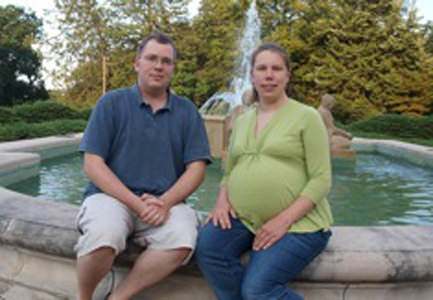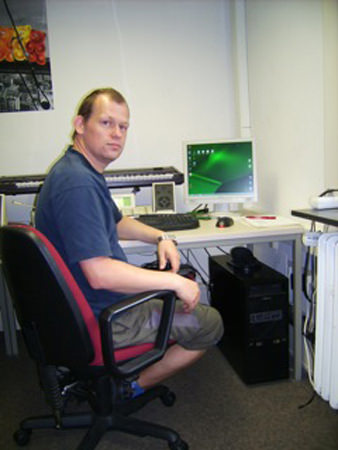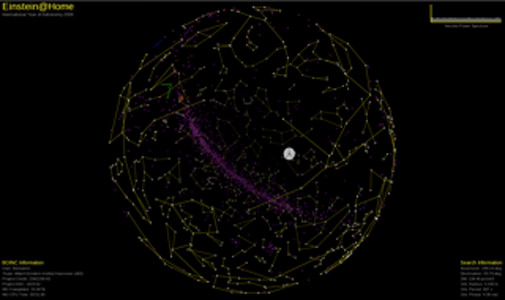[/caption]
Hooray for citizen scientists! The Einstein@Home project has discovered a unusual pulsar approximately 17,000 light-years away in the constellation Vulpecula. The project works by people “donating” idle time on their home computers. This is the first deep-space discovery by Einstein@Home, and the finding is credited to Chris and Helen Colvin, from Ames, Iowa in the US, and Daniel Gebhardt of Universitat Mainz, Musikinformatik,Germany.
The newly discovered pulsar, PSR J2007+2722, is an isolated neutron star that rotates 41 times per second and has an unusually low magnetic field.
Jim Cordes, Cornell professor of astronomy, said the object is particularly interesting because it is likely a recycled pulsar: a neutron star that once had a companion star from which it acquired mass; but whose companion exploded, kicking it free.
Unlike most pulsars that spin as quickly and steadily, PSR J2007+2722 sits alone in space, and has no orbiting companion star. However, the scientists say they can not rule out that it may be a young pulsar born with an lower-than-usual magnetic field.
“We think there should be more of these disrupted binary pulsars, but there haven’t been that many found,” said Cordes. “No matter what else we find out about it, this pulsar is bound to be extremely interesting for understanding the basic physics of neutron stars and how they form.”
The discovery demonstrates the power of the network used to collect and sort through vast amounts of data, Cordes said.
Einstein@Home was originally organized to find gravitational waves — ripples in space-time — using the Laser Interferometer Gravitational Wave Observatory (LIGO). In 2009, data from the Arecibo Observatory were included in the processing.

Einstein@Home is based at the Center for Gravitation and Cosmology at the University of Wisconsin-Milwaukee and at the Max Planck Institute for Gravitational Physics (Albert Einstein Institute, or AEI) in
Hannover, Germany. About one-third of Einstein@Home’s computing capacity is used to search Arecibo data.

“This is a thrilling moment for Einstein@Home and our volunteers. It proves that public participation can discover new things in our universe,” said Bruce Allen, leader of the Einstein@Home project, AEI director and adjunct professor of physics at the University of Wisconsin-Milwaukee. “I hope it inspires more people to join us to help find other secrets hidden in the data.”
Gebhardt and the Colvins will receive plaques noting their discovery, and all plan to stay involved.
For information on how you can get involved in the project, see the Einstein@Home website.
Sources: Cornell University, ScienceExpress.
On a related note, check out these Albert Einstein quotes.


OK, all signed up for Einstein@Home now. I’m less worried about helping with SETI or the search for Gravitational waves as these have big budget experiments on their side, but Einstein@Home seems very worthwhile.